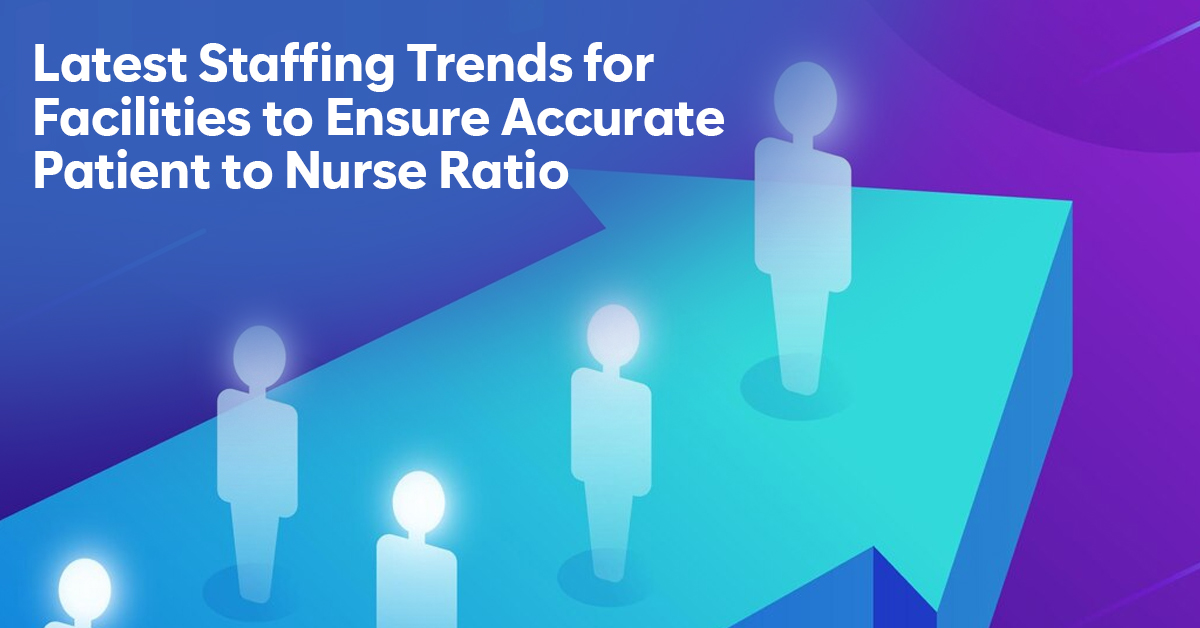In the ever-evolving landscape of healthcare, maintaining an accurate nurse-to-patient ratio is paramount for ensuring optimal patient care. Adequate staffing levels not only contribute to patient safety but also impact the overall quality of healthcare delivery. As we delve into 2023, several staffing trends have emerged, guiding healthcare facilities toward achieving and maintaining the elusive balance between nurse staffing and patient needs.
Embracing Technology for Smarter Staffing
One of the most significant trends shaping the healthcare staffing landscape is the integration of technology. From predictive analytics to artificial intelligence, healthcare facilities are leveraging advanced tools to forecast patient demand, optimize scheduling, and allocate resources efficiently. Predictive modelling enables facilities to anticipate patient influx, allowing for proactive adjustments to staffing levels. Additionally, AI-driven solutions assist in automating routine tasks, freeing up nurses to focus on more complex aspects of patient care.
Smart staffing platforms are becoming increasingly prevalent, utilizing historical data, patient acuity, and real-time information to generate staffing recommendations. These tools empower nurse managers to make data-driven decisions, ensuring that staffing levels align with patient needs and acuity, ultimately leading to improved outcomes.
Flexibility in Staffing Models
The traditional 8-hour shift may no longer be the sole staffing model in healthcare. Facilities are exploring alternative scheduling arrangements to meet the demands of a dynamic healthcare environment. Flexible scheduling options, such as 10 or 12-hour shifts, self-scheduling, and remote work opportunities, are gaining popularity.
These flexible staffing models not only enhance work-life balance for nurses but also contribute to better nurse satisfaction and retention. By accommodating the diverse needs of nursing staff, healthcare facilities can attract and retain top talent, which is crucial for maintaining a consistent nurse-to-patient ratio.
Focus on Nurse Training and Education
Investing in ongoing training and education is a trend that directly influences staffing effectiveness. As the healthcare landscape evolves, nurses are required to adapt to new technologies, procedures, and best practices. Continuous education programs ensure that nurses are equipped with the latest knowledge and skills, enabling them to provide high-quality care.
Moreover, well-trained nurses are more adept at managing complex patient cases, potentially reducing the need for additional staffing during critical situations. By prioritizing professional development, healthcare facilities can build a more resilient and adaptable nursing workforce.
Collaborative Care Models
Another trend shaping the staffing landscape is the adoption of collaborative care models. Interprofessional collaboration involves healthcare providers working together to address the comprehensive needs of patients. By fostering collaboration between nurses, physicians, therapists, and other healthcare professionals, facilities can enhance patient care without necessarily increasing staffing levels.
Collaborative care models promote communication and teamwork, enabling healthcare providers to share responsibilities and make collective decisions. This approach not only optimizes the use of existing resources but also enhances the overall patient experience.
Addressing Burnout and Mental Health
The healthcare industry has long grappled with the issue of nurse burnout, and addressing this concern has become a significant staffing trend. Burnout not only jeopardizes the well-being of nursing staff but also contributes to high turnover rates and staffing shortages.
Facilities are now prioritizing the mental health of their nursing workforce by implementing wellness programs, providing access to mental health resources, and creating supportive work environments. Recognizing and addressing burnout not only improves nurse retention but also ensures a stable and motivated workforce, positively impacting the nurse-to-patient ratio.
Conclusion
In conclusion, the latest staffing trends in healthcare facilities underscore the industry’s commitment to achieving and maintaining an accurate nurse-to-patient ratio. Embracing technology, adopting flexible staffing models, investing in education, promoting collaborative care, and addressing burnout are key strategies for navigating the challenges of the evolving healthcare landscape.
By staying attuned to these trends and implementing proactive measures, healthcare facilities can position themselves to deliver high-quality patient care while fostering a resilient and satisfied nursing workforce. As we move forward, the integration of these trends will play a pivotal role in shaping the future of healthcare staffing and, consequently, the overall well-being of patients and healthcare professionals alike.






